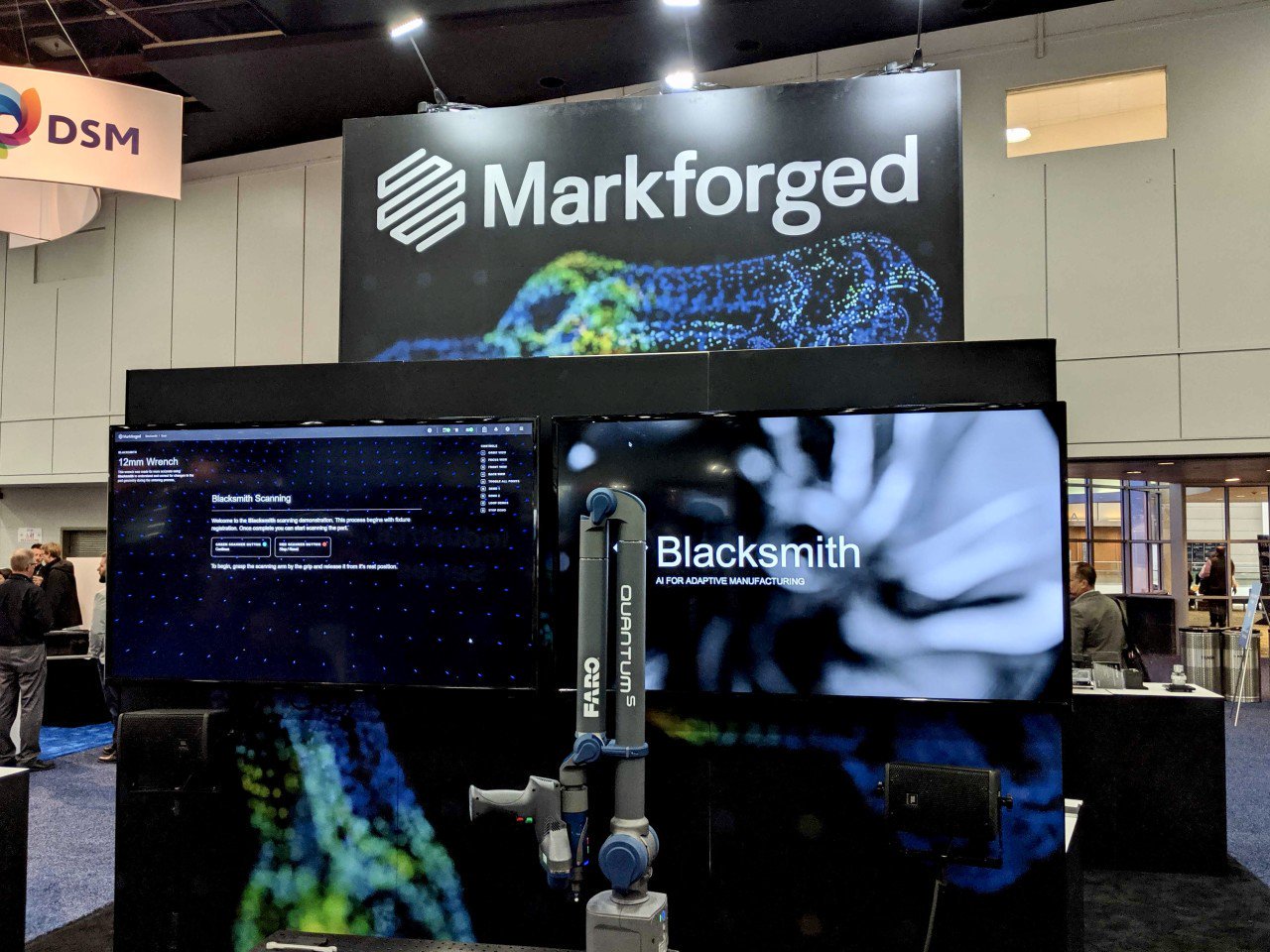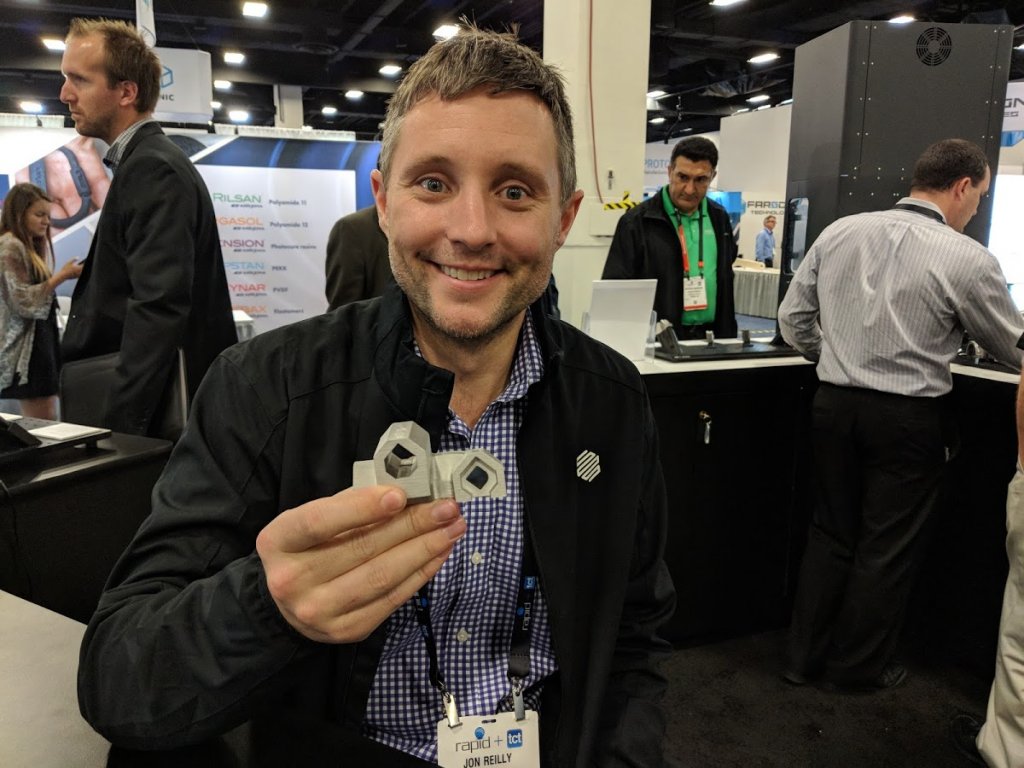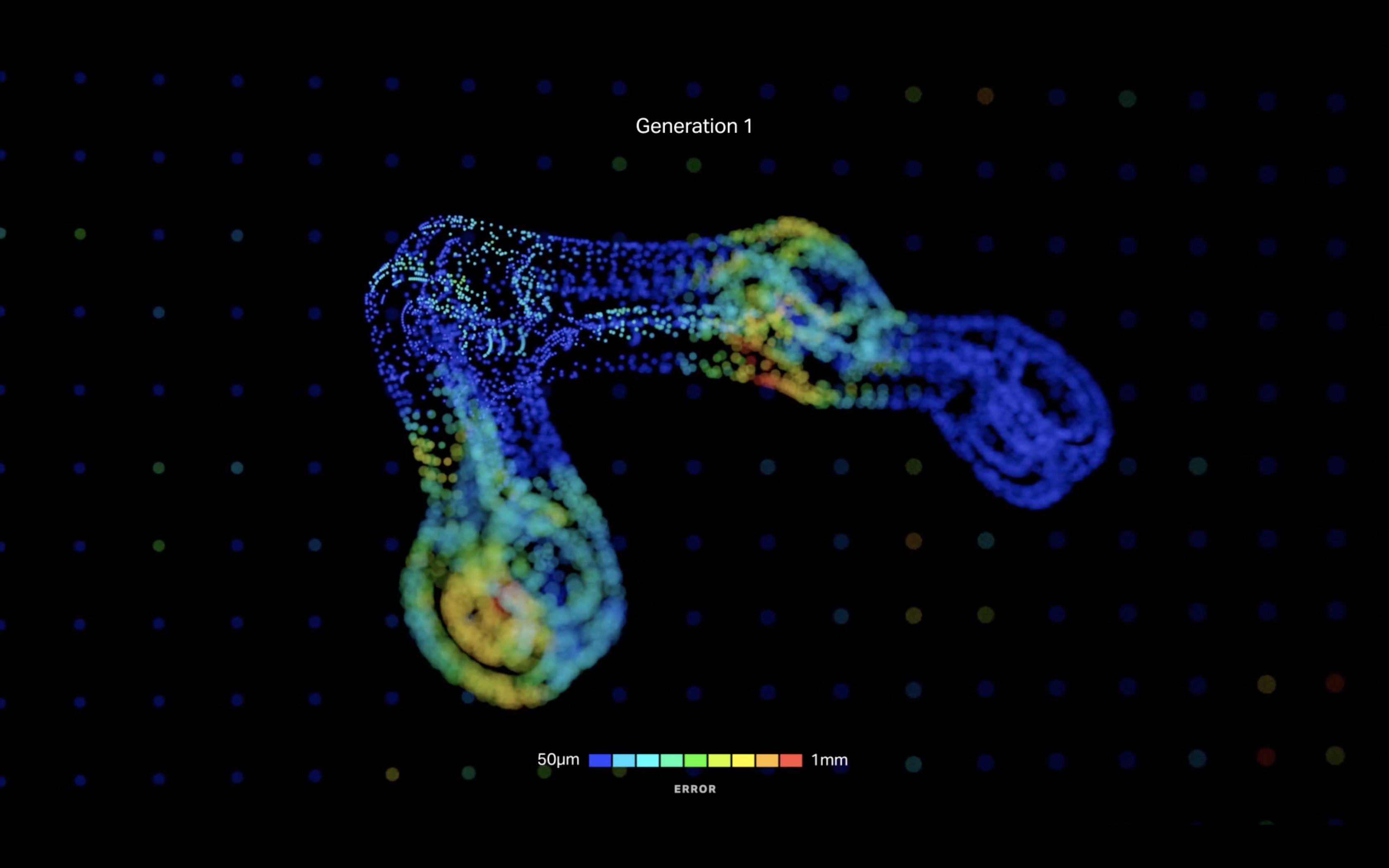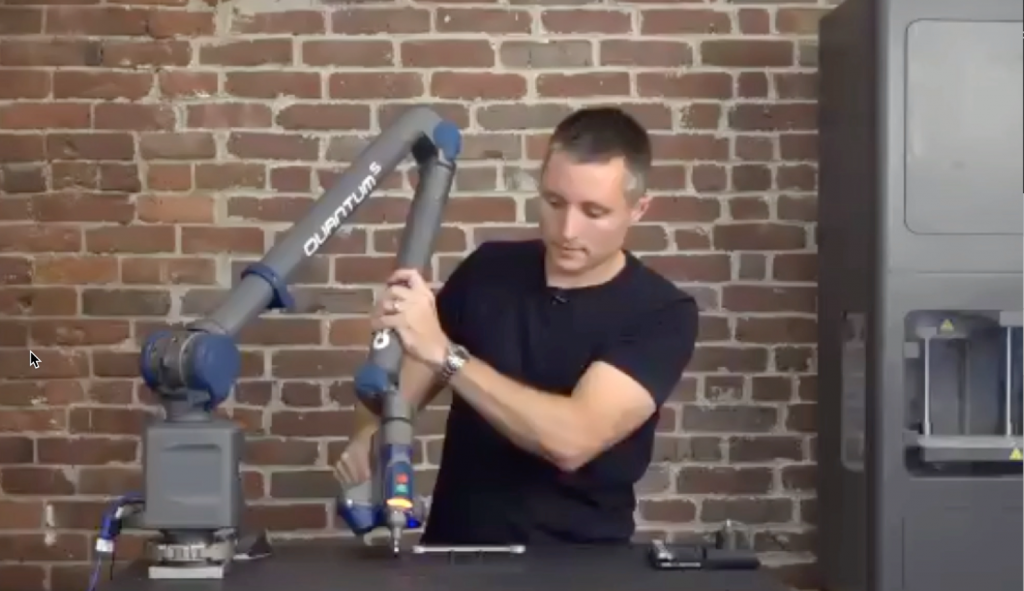 Accuracy in Additive Manufacturing (AM), from the CAD design to the printing process, is not always easy to deliver. Companies are working hard at trying to ensure consistency and repeatability throughout the entire manufacturing process since today much more is required of AM systems who need to turn out functional goods that can meet traditional manufacturing standards while being cost-effective in order to be even more competitive. Some common 3D printing problems arise on the way to achieving the desired original design, so before a 3D printed metal part leaves the factory, it has probably undergone some kind of post-processing to smooth and perfect the surface. For example, if Direct Energy Deposition (DED) metal 3D printing was used, this typically produces near-net-shape parts that must be CNC machined, but other forms of AM also require some type of smoothing close to the end. And even when all that is done, the part might not fit or work as originally intended. In some cases, parts are predeformed in order to compensate for inaccuracies during the process. All this basically means that engineers and specialists will need to go back to review the CAD design and processes, which take up a lot of time, and sometimes the problems can’t even be corrected, so the item being produced is good for scrap, which also means money lost.
Accuracy in Additive Manufacturing (AM), from the CAD design to the printing process, is not always easy to deliver. Companies are working hard at trying to ensure consistency and repeatability throughout the entire manufacturing process since today much more is required of AM systems who need to turn out functional goods that can meet traditional manufacturing standards while being cost-effective in order to be even more competitive. Some common 3D printing problems arise on the way to achieving the desired original design, so before a 3D printed metal part leaves the factory, it has probably undergone some kind of post-processing to smooth and perfect the surface. For example, if Direct Energy Deposition (DED) metal 3D printing was used, this typically produces near-net-shape parts that must be CNC machined, but other forms of AM also require some type of smoothing close to the end. And even when all that is done, the part might not fit or work as originally intended. In some cases, parts are predeformed in order to compensate for inaccuracies during the process. All this basically means that engineers and specialists will need to go back to review the CAD design and processes, which take up a lot of time, and sometimes the problems can’t even be corrected, so the item being produced is good for scrap, which also means money lost.
With new software being commercially released later this year, Markforged promises to help companies struggling to accurately 3D print parts. Blacksmith AI is a new tool which automatically adjusts programming to ensure accurate additive production, which the company claims will enable more agile design, process adjustment and more dependable manufacturing. The software is said to create a continuous feedback loop to produce each 3D printed part as it has been designed in the CAD stage, cutting waste and reducing time to market in the process. In short, the design is analyzed, compared to scans of the part, and then the process is automatically modified to build the part as it was originally intended. Blacksmith is also a continuous learning platform, adapting to changes during the process throughout the use of the production machine, and even using cloud-based technologies that enable the connection of all the machines using it in factories around the world, meaning Blacksmith can learn at the speed of global production.
Join VP of Product Jon Reilly on Tuesday, July 23rd at 11am EDT for a LIVE demo of Blacksmith #AI.
Register now: https://t.co/PiAR4UYOCX
How do you think #software fits into the future of manufacturing? pic.twitter.com/xt4PSfTqK4
— Markforged (@Markforged) July 10, 2019
Last May, 3DPrint.com spoke to Markforged founder Greg Mark about AI and he highlighted that “our machine learning software is letting the machine rewrite its own code”, so that “the machine can now improve itself”, letting manufacturers create dependable parts the first time, every time.
Markforged, a supplier of metal and carbon fiber AM systems, headquartered in Watertown, Massachusetts, recently hosted a live webinar to introduce Blacksmith, stating that it is the first artificial intelligence-powered software that makes manufacturing systems ‘aware’, enabling them to automatically adjust programming to ensure every part is produced as designed. Vice President of Product Jon Reilly explained how Blacksmith works and fits into adaptive manufacturing.
“Generally, 3D printers are far more repeatable than they are accurate. This is true with our plastic printers, our metal printers and basically with any printer that exists. That is just because there are errors that come in the toolpathing, but the printers can usually repeat the toolpath. Here, we are converging the actual accuracy of our parts towards the repeatability, so it would work in any printer, in any system that does this automatically, we are just trying to converge to our highest possible amount of accuracy,” suggested Reilly.
“We have been working with the software at predictively sintering or predictively scaling a part to make it more accurate, but its really hard because across a wide range of geometries, parts sinter and shrink in different ways, so this (Blacksmith) is the solution that actually nails that problem. Any sintering process, even metal injection moulding, goes through the same iterations because you have the same problem with getting accurate, but they are then incredibly repeatable,” he continued.
So, what does Blacksmith do? It 3D scans the part, then uploads the scan data to the system, automatically alters toolpaths without the engineer having to take any actions, and finally adapts each iteration. With a continuous feedback loop, Blacksmith learns from previous part production so parts become more accurate and precise with each print.
Traditionally 3D printing of metal parts goes through the CAD design stage, then it is uploaded to a software that will automatically generate the 3D printing toolpath, and finally the printed part, which Reilly stated that in many cases its about 20 percent larger than the expected final outcome, which is usually compensated with washing and sintering to reduce the remaining metal powder. But then “the final metal part is probably not exactly CAD intent” so this means that “the system as a whole has no idea it doesn’t fit until the engineer tries to install that part in the application designed”. The expert stated that “if you have to change something, you have to go all the way back to the CAD board”.
“All of a sudden, it does become menacing, because when you have to alter part dimensions to compensate for a print error, the CAD rework is labor and time-intensive. Which is why we thought about a new way to get around this which didn’t involve unit tests (printing small portions of a part), measuring the part afterward and adjusting the dimensions, or post machine parts because altering CAD has unintended consequences. So we started thinking about closed-loop systems and the basis of Blacksmith is that we are going to connect the 3D printers from Markforged with the inspection equipment that the company already has, and use AI to automatically adapt the design to be closer to the CAD intent so that the next print is better,” explained Reilly.
During the webinar, Reilly attempted a demonstration using Blacksmith and the first iteration of a wrench which had been 3D printed inaccurately and needed adjustments. After dropping the wrench into the fixture, Reilly grasped the scanning arm by the grip and released it from its rest position, which he connected via the API to do three quick fixture registration points and then simply started scanning the part, the Blacksmith software smartly knows what the part and fixture are, and appears to be intelligent so that when Reilly placed his hand under the scan, the fingers didn’t show up on it. After three attempts, he gets the complete scan of the part and a map showing its geometry with all the associated data points, lined out in different colors showing whether the parts are accurate or not. The software will automatically detect the areas that are not appropriate with what was intended in the CAD design (in red) and automatically adjust that part so that next time, it will come out right.
“Blacksmith effectively automates the alteration of the CAD intent, since Blacksmith reslices parts for you, leaving the CAD design as the ‘ground source of truth’. Eventually, because it is learning every part that it scans and every adjustment that it has to make, it will start automatically adjusting so that the number of iterations to get to a perfect part go from three (which is where we are at today) to just one, and ultimately the first time you print it will be exactly as you intend it.”
The firm asserts that AI will reinvent the process completely to improve the way machines work and adaptive manufacturing will generate toolpaths based on previously inspected parts, boosting throughput and accuracy. They consider there are a few changes Blacksmith will make when it comes to adaptive manufacturing:
- Using Blacksmith suggests there will be a lot less waste because the process won’t drift out of the intended spec and avoid making parts that cant be used without human intervention.
- Blacksmith will lower parts costs globally saving money for manufacturers and consumers because there will be less waste, higher yields, and efficiency with more predictable part outcomes.
- Blacksmith will usher in a new era in 3D printing metal by predicting and compensating for the variability introduced with the sintering process. Every time a part is printed and sintered, Blacksmith learns more about how 3D printed metal is made and applies that learning to every future print.
- Blacksmith will combine AI and cloud-based technologies for all manufacturing, not just 3D printing meaning that eventually, Blacksmith might be able to tell you what works and what doesn’t work in 3D printing.
Set to be released later this year, Blacksmith will initially work only with Markforged Metal X and X7 3D printing systems, but the long-term goal is to make it compatible with all manufacturing machinery. In 2020 Blacksmith, could also be available to CNC machining and other manufacturing processes. It is also likely that some subscription might be associated with Blacksmith, but no announcements will be made just yet.
Reilly noted that there will be a lot of options in Blacksmith that control the mechanical process and all of the information will feed into the AI and will be adjustable over time.
“After what we believe will be a short period of time, AI will be intelligent enough to automatically adapt across a wide range of geometries it hasn’t seen before to create the part that we are trying to make. Blacksmith is getting its data from all of the people who are uploading their information to the cloud to take advantage of the collective learning (this can be turned off if for some reason the company doesn’t want to share the data). Also, since we assume your CAD is the source of the design intent, and we want to keep that, the changes won’t go into CAD, just to the machines actually producing the parts, so that the machines are actually the ones that learn and adapt,” he concluded.
Markforged distinguishes itself from other metal 3D printer manufacturers by putting out entire lines of systems with an X3, X5 and X7 on the market and building machines based on the company’s proprietary Atomic Diffusion Additive Manufacturing (ADAM) technology. The company recently sold over 100 metal X2 printers, and has been a big hit in some of the major trade shows in the United States, like CES 2018 and RAPID + TCT. Their cloud-connected industrial 3D printers are used by NASA, Google, Ford, Amazon, Siemens and many more companies in 50 countries to produce same-day prototypes and stronger end-use parts.
We still need to wait for Blacksmith to come out, but if we think about the meaning of the term Blacksmith, which goes way back over 10 centuries, it was one of the most important trades, often seen as respected artisans, their ability to ‘conjure’ objects and weaponry from crude iron ore was regarded in much the same light as the revered alchemists. So if blacksmiths used to be known as the kings of all trades because of their ability to create tools, perhaps the vision at Markforged will follow that path and beyond, helping companies find precision and mastery, in manufacturing.
The post Markforged Demonstrating its Blacksmith AI appeared first on 3DPrint.com | The Voice of 3D Printing / Additive Manufacturing.







132 Replies to “Markforged Demonstrating its Blacksmith AI”
Comments are closed.